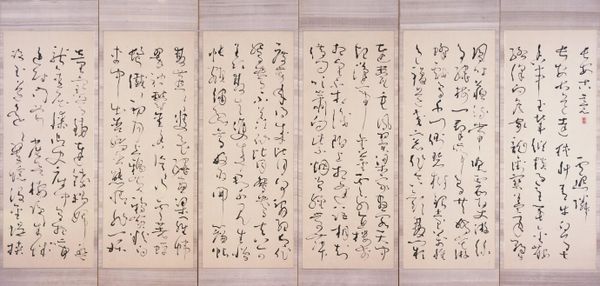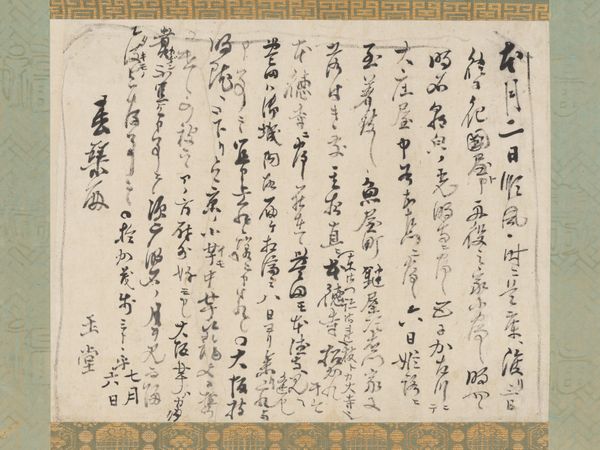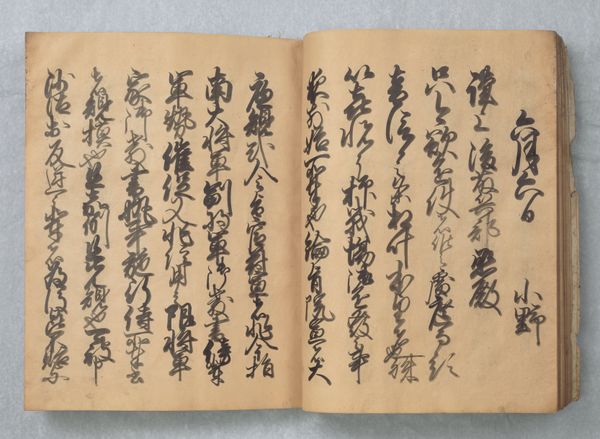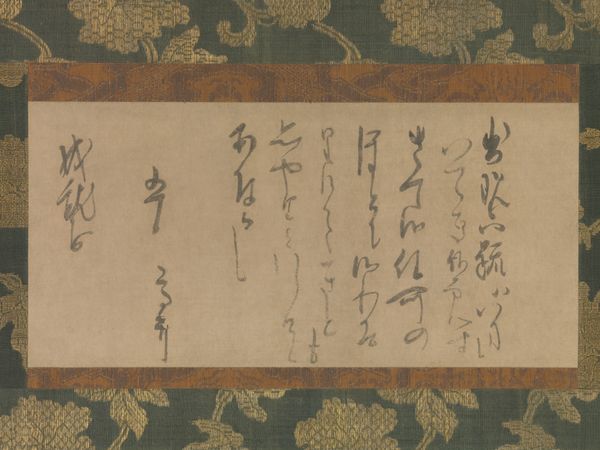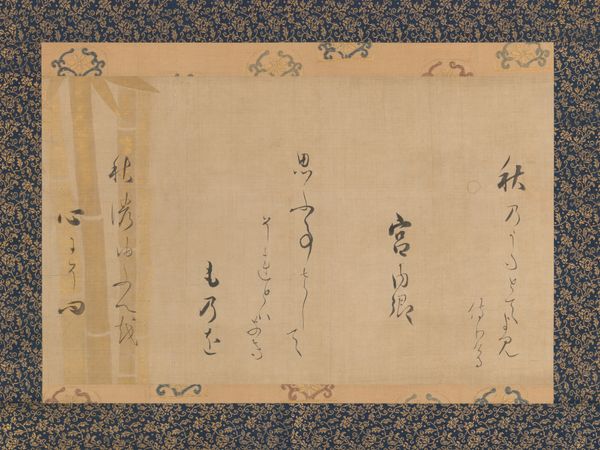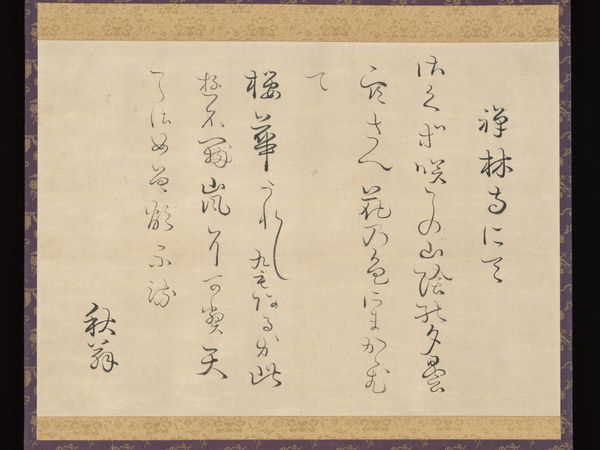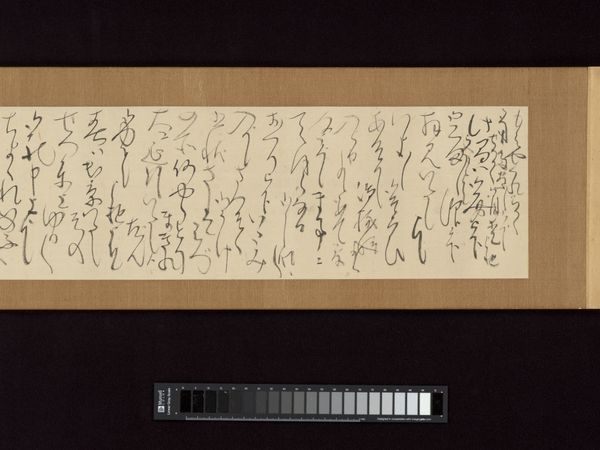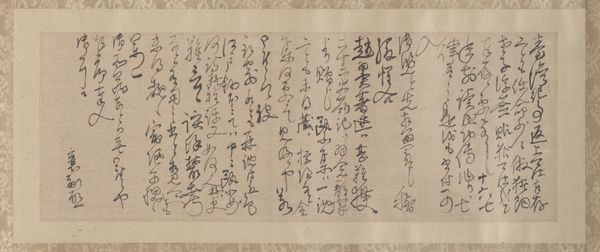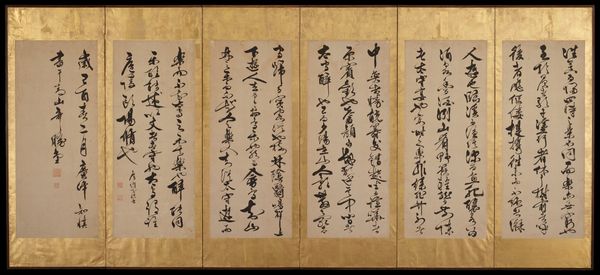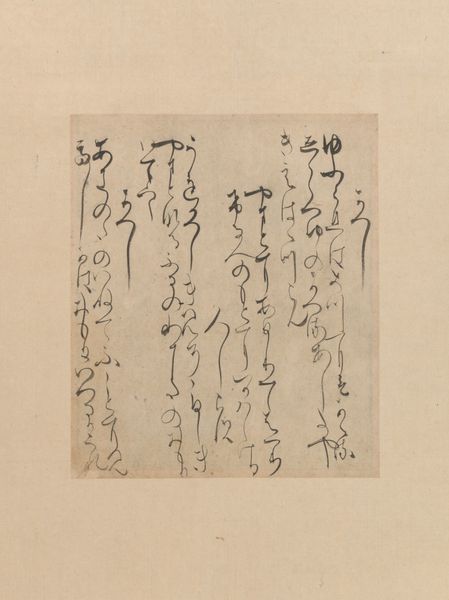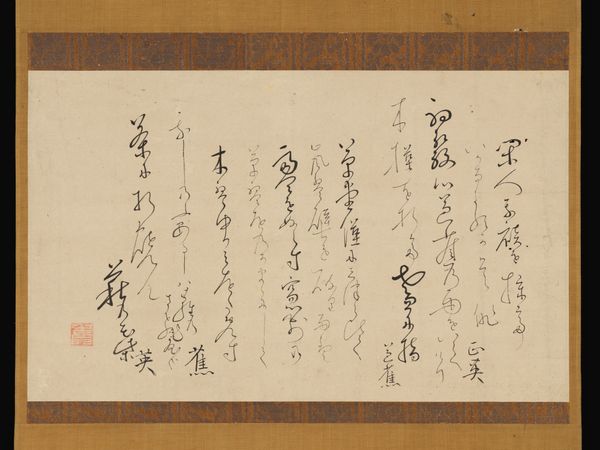![Chang'an [left of a pair] by Kameda Bōsai](/_next/image?url=https%3A%2F%2Fd2w8kbdekdi1gv.cloudfront.net%2FeyJidWNrZXQiOiAiYXJ0ZXJhLWltYWdlcy1idWNrZXQiLCAia2V5IjogImFydHdvcmtzL2I2MmQ5YWYyLTY1ZDYtNDI2ZS04ODAwLTE2ZjRhMWE2YmFkMi9iNjJkOWFmMi02NWQ2LTQyNmUtODgwMC0xNmY0YTFhNmJhZDJfZnVsbC5qcGciLCAiZWRpdHMiOiB7InJlc2l6ZSI6IHsid2lkdGgiOiAxOTIwLCAiaGVpZ2h0IjogMTkyMCwgImZpdCI6ICJpbnNpZGUifX19&w=3840&q=75)
paper, ink-on-paper, ink
#
asian-art
#
paper
#
ink-on-paper
#
ink
#
calligraphic
#
calligraphy
Dimensions: 53 7/8 × 120 3/8 in. (136.84 × 305.75 cm) (image)67 1/4 × 135 1/16 × 5/8 in. (170.82 × 343.06 × 1.59 cm) (mount)
Copyright: Public Domain
Kameda Bōsai created this six-panel screen with ink on paper in Japan during the Edo period. The calligraphic screen showcases Bōsai's literary talent and reflects the cultural values of his time. The flowing script and elegant composition evoke a sense of refinement and scholarly accomplishment. The artwork references the city of Chang'an, an ancient capital of China. During the Edo period, Japan experienced a renewed interest in Chinese culture and Confucian ideals, seen here in the selection of a Chinese subject, indicating Bōsai's engagement with the cultural and intellectual trends of his time. The work reveals the social conditions of artistic production in Edo-period Japan, where artists often relied on patronage from wealthy merchants or members of the ruling samurai class. By exploring Bōsai's life, writings, and the cultural context in which he lived, we can gain a deeper appreciation for the social and institutional forces that shaped his artistic vision.
Comments
minneapolisinstituteofart almost 2 years ago
⋮
This pair of screens features the calligraphy of Kameda Bōsai, a Confucian scholar celebrated for his dynamic, vibrant handwriting. (Confucianism is an ancient philosophy and code of ethics that underpins the culture of China and its neighbors.) As a scholar, Bōsai was familiar with classical Chinese literature and culture and was a skilled calligrapher, painter, and poet in his own right. In this pair of screens he used the expressive “running” style of calligraphy, in which characters are abbreviated and multiple characters occasionally run together. The text is a transcription of a Chinese ballad (qilu) called “Chang’an, Ancient Theme” (“Chang’an guyi”) by Lu Zhaolin (c. 634–684). The city of Chang’an, today known as Xi’an, was significant to the Japanese—two of Japan’s early imperial capitals, Heijō and Heian (now the cities of Nara and Kyoto, respectively), were designed after this ancient Chinese capital city.
Join the conversation
Join millions of artists and users on Artera today and experience the ultimate creative platform.
